The women of the Special Operations Executive
23.04.2020

special operation executive
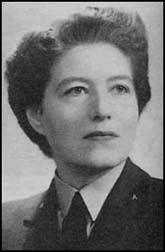
The "Special Operations Executive
from the end of April 1942 women were also allowed on active duty in missions
(Sections)" was founded in July 1940 on the initiative of Winston Churchill. It was a secret British intelligence special unit with the task of sabotaging behind enemy lines and supporting and supplying local resistance groups, based on IRA strategies
About 6000 people, including about 500 women, were working for the SOE; Special Operations Executive from the end of April 1942 women were also allowed on active duty in missions (Sections), although even then individual women were already being deployed in other services.
The SOE had divisions(Sections) for each country of that World War. In some countries there were only a few agents, in others there were hundreds. The plan was to use British citizens in the first instance. But since absolute competence in the language of the target country was essential, this goal was quickly abandoned.
Men and women were trained equally in espionage techniques, self-defence, handling explosives and weapons; women were often used as radio operators or couriers.
Knowledge about the SOE and the women active there is still dominated by the publications on British Section F for France. This was due to the commitment of Vera Atkins, one of the Section's leaders for the female agents missing in action there. As early as the summer of 1944, she set out in search of these women - and if she had not done so, their fate would probably never have been clarified, because many traces were lost very quickly - and a whole number of the perpetrators and those responsible were executed. But not even the fate of all 39 women in this Section F has been extensively researched, of some of them there is not a picture. These women are often called "British parachuters", but the women really came from all possiple palces of the world, from New Zealand, Shanghai, Moscow, Chemniz - and many from France.
Frighteningly little is known about the other departments, and it is likely that white spots will remain here. This is already visible in the parallel section in France, the Section RF, which was under French management, but was absolutely comparable in training and assignments. This can also be seen in Ravensbrück, where many women from different sections of the SOE were imprisoned according to their prison names. These women are often referred to as "French parachutists" - which is true in terms of citizenship, but there were also women from North Africa in action here, with a history all their own.
Of 10 of these women, their execution in Ravensbrück or death in the gas chamber is known:
Marie-Louise Cloarec, Eugenie Djendi (aka Jenny Silvani), Suzanne Mertzisen and Pierrette Louin (aka Pierrette Salinas) of the Section RF were executed on January 18, 1945, shortly thereafter Violette Szabo, Denise Bloch and Lillian Rolfe of the Section F. Germaine and Madelaine Tambour and Ciceliy Lefort (Section F) were killed in the gas chamber, after being prisoners in the Death-Zone in the Uckermark camp. Yvonne Rudellat survived imprisonment in Ravensbrück under the name "Jaqueline Gauthier", but died under this alias in Bergen Belsen shortly after liberation.
Three active women of the two sections, among them Odette Sansom, survived, a fourth, Eileen Nearne, even managed to escape from a subcamp shortly before the end of the war. In Ravensbrück, however, there are other women who were trained as parachutists or agents, some of whom were directly connected with the SOE. Olga Prestes was not an agent of the SOE, but she is the most famous of these women in Ravensbrück. Others, such as "Helena", whose execution is documented in Ravensbrück's records, are still waiting for their final investigation.
In 1946, the SOE was disbanded, files were destroyed or disappeared as classified information. Many of the women never received recognition of their efforts, or received it very late. Especially the women from North Africa, such as the executed Eugenie Djendi or the surviving Jeanne Mereau, are examples of this forgetting - and that is why Vera Atkins' concern to stand up for women in her department as early as 1944 was to be duly recognized as a contribution to the perception of women's history - especially in an area where role models and perceptions are still very much marked by the Male Gaze.
*Recommended literature * A number of publications deal with the SOE and the earlier dominance of the SOE F is waning. There are still few that deal with women's history or the aspects of feminism, but which immediately catch the eye - be it individual fates such as Vera Atkins or Eugenie Djendi, or social issues such as the deployment of women in France - especially the Merlinettes.
Monika Siedentopf "Absprung über dem Feindesland" (dtv) offers a good introduction - but with a focus on the women of Section F who died in the mission. A comprehensive, up-to-date scientific recording and evaluation of these events is still pending. But the documentation that Siedentopf provides already offers a solid basis.
Arne Molfenter and Rüdiger Strempel "Der Finsternis entgegen" (Dumont) offers detailed individual fates of the women of Section F
Bernhard O'Connor "SOE Heroines" (Amberley) also deals extensively with the women of the Section RF, but in some cases gross research errors are noticeable.
Sarah Helm has dealt with the SOE in several German and English publications, so in "Without Hair and Names" to Ravensbrück, or in "A Life in Secrets" about Vera Atkins and the missing agents of the SOE, focusing on the so-called "British" female parachutists, but who were often also pure French, like Denise Bloch. But in "Without hair and without names" you can also find profound background information about the "French" female parachutists.
Germaine Tillion "Frauenkonzentrationslager Ravensbrück"(Klampen): Here you can find details and background information about the imprisonment in Ravensbrück and the executions. When Tillion talks about nine executed female parachutists, this is to be taken absolutely seriously, because of the sources.
Michael Foot is highly recommended as an author; not only has he written the standard works on the history of the SOE, but there is also a single work by him on the SOE in the Netherlands (SOE in the Low Countries. St Ermin's Press, London 2001) SOE. An Outline History of the Special Operations Executive, 1940-1946, British Broadcasting Corporation, London 1984 would be one of the many writings that would provide an absolutely sound introduction to the SOE.
Mireille Hui "Les Merlinettes : Période de 1942 à 1945" is a documentation of the unity of North African women working for France.
https://de.scribd.com/document/378587876/La-feminisation-de-l-armee-francaise-pendant-les-guerres-1938-1962-enjeux-et-realites-d-un-processus-irreversible http://fortificationetmemoire.fr/wp-content/uploads/2016/01/2013-09-Les-Merlinettes-AS.pdfhttps://www.nicematin.com/faits-societe/la-legion-d-honneur-pour-une-centenaire-heroine-de-guerre-364317
Violette Reine Elizabeth Szabo, née Bushell
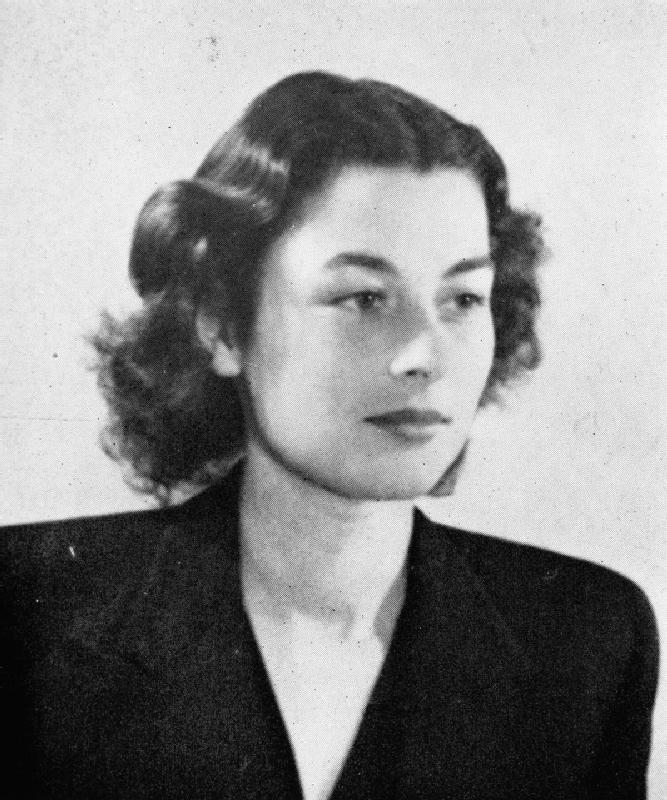
Violette Reine Elizabeth Szabo
Born June 26, 1921 near Paris. At the beginning of the thirties the family moved to London. Violette Szabo was sporty and boyish at an early age and began working at 14. In 1940 she married Étienne Szabo, a French officer of Hungarian descent. They had a daughter, Tanja. But Szabo was killed before she was even born. In the summer of 1943 Violette volunteered for the SOE, where she was immediately accepted because of her knowledge of French.
Her parachute deployment was a very dangerous task in this war; she was accompanied only by Philippe Liewer, who was head of the British ring of agents "Salesman".
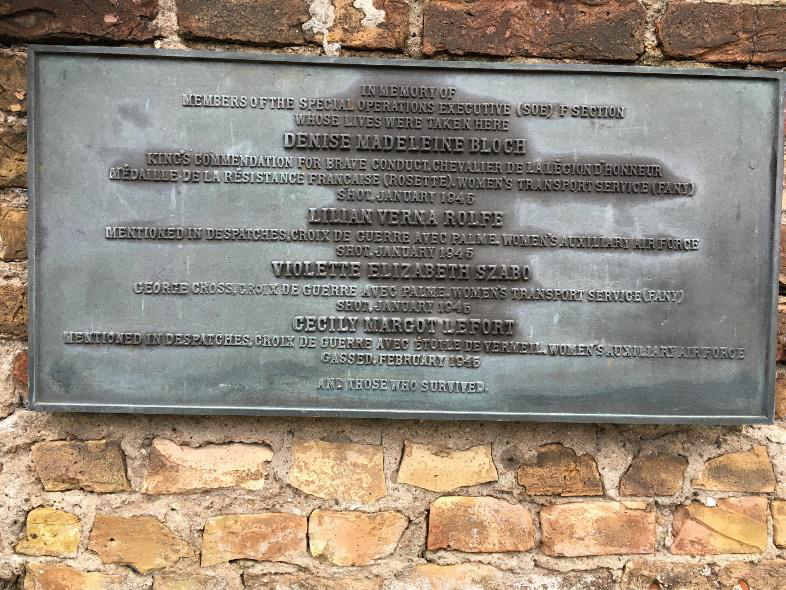
"Salesman" operated in the Rouen and Le Havre area, but many arrests by the Gestapo shook the circle. Szabo's main task was to make contact with the remaining "Salesman" members. Each encounter could mean arrest, torture and death. When she realised that the Salesman ring was as good as destroyed, she returned to London on 30 April.
On June 8, 1944, they both went on their next assignment near Limoges to set up a new ring of agents in the Département of Haute-Vienne. n a car, together with other members of the Maquis, she ran into a roadblock of the SS Panzer Division "Das Reich" at Salon-la-Tour.
Szabo bravely put up a fight with her weapon, but was then overpowered with an empty magazine.
While in custody in Paris and interrogated in Avenue Foch, she was transferred with SOE F agents Lilian Rolfe and Denise Bloch in August 44, first to Ravensbrück and then to subcamps in Thorgau and Königsberg. After January 18, 1945, the three women were shot in Ravensbrück.
Cecily Lefort, who is also named on the plaque, died later. Her route led from the main camp to the death zone of the Uckermark camp and from there to the gas chamber in Ravensbrück.

Even in imprisonment and under the harshest conditions, Violette Szabo was unbroken and full of vitality until the end. The monument to the dead fighters of the SOE Section F in Valencay bears her image precisely for this reason, and thus pays tribute to her outstanding courage and strength.
Eileen Nearne

Eileen Nearne
Born 15.3.1921 in London, fluent trilingual, having a spanish mother. The family lived already from 1923 in France. Also her sister Jaqueline and her brother were successfully active for Section F. With her sister she fled to England in 1940, where she was trained and employed in the radio sector and in the handling of secret codes due to her abilities.
At the beginning of March 1944 she flew into action in a "Lysander", a single-engine aircraft used to drop agents. Under the code name "Rose" she was to work as a radio operator and develop resources for the Resistance in the area south of Paris. Her circle was supposed to find houses and people that gave space around D-Day and later for parachutists.
She sent 105 messages in about 5 months, which was extremely risky considering the strength of the German defense, since every radio communication could be located. Her circle was involved in the detection and destruction of V2 missiles, and often she worked on her own. These were the most dangerous times; the Gestapo searched intensively for people in resistance and an arrest meant torture and usually death.

On 21 July 1944 she was tracked down, arrested and interrogated by the Gestapo in Paris.
Despite water torture, she stuck to a cover story invented at the moment of her arrest and was not directly associated with the SOE, even though the Germans had arrested her on the radio! This probably saved her life.
On August 15, she was sent to Ravensbrück and on September 4, 44, to Torgau, a subcamp of Ravensbrück. She was then transferred to another subcamp near Leipzig.
There she managed to escape with a few other young women on April 13, 1945. She even managed to escape arrest once more and then hide in Leipzig, where American troops arrived on April 18. At the beginning they do not even believe this young woman, because her story was simply unbelievable. But Vera Atkins confirmed her story.
After the war she lived quietly and secludedly together with her sister Jaqueline; she suffered her life from the consequences of her experiences.
*Odette Marie Céline Sansom née Brailly *
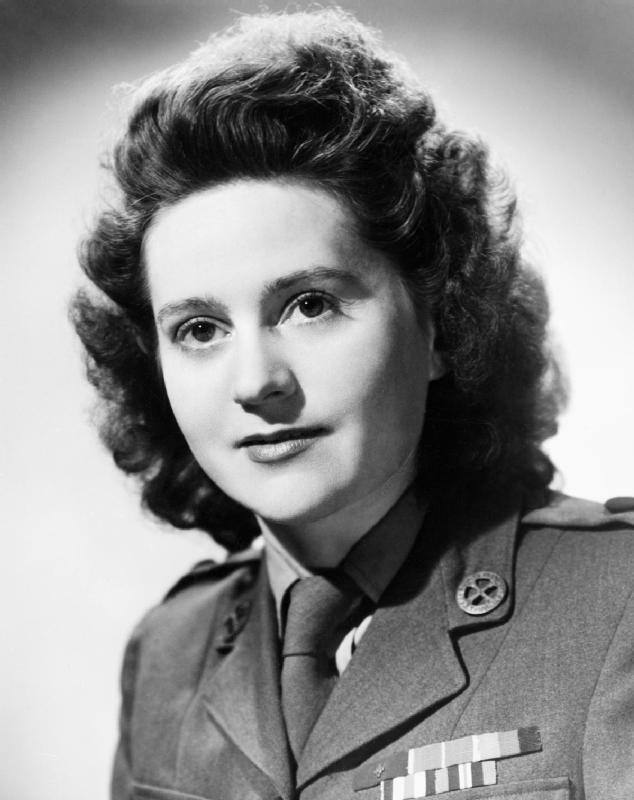
Odette Marie Céline Sansom geb. Brailly
Born 28. 4. 1912 in Amiens, bilingual. She married Roy Sansom in 1932 and in 1934 the family moved to London. She has 3 daughters with Roy Sansom. After her training with the SOE, she and two other agents were dropped with a felucca at Cassis in southern France on 31 October 1942. Under the name Yvonne Bernier she worked in the agent ring Spindle as a radio operator and courier. She is often called a parachutist, but this is not true. She worked successfully for one year with her leader Peter Churchill, but since November 1943 her work was supervised by Hugo Bleicher, a very tricky member of the German defense and through a collaborator introduced by him. Hans Kieffer, commander of the Gestapo in Paris, also had an independent connection to the circle. On April 16, 1943, Odette and her partner Peter Churchill were arrested in St. Jorioz. She was first interrogated by the Gestapo in Paris, then she was sent to the prison in Fresnes.
On 12 May 44 she was sent from there to a prison in Karlsruhe with 7 SOE F agents. Four of these women were executed by poison in Natzweiler on 6 July 1944 and four were shot in Dachau on 13 September. 1944 Although the last woman was transferred from Pforzheim to Karlsruhe only one day before the execution, Odette Sansom's knowledge of the events made a major contribution to uncovering the fate of all of these women. On 18.7. 1944 she was transferred to Ravensbrück. There she was kept in solitary confinement for a very long time. When she was arrested, she had stated that she was the wife of Peter Churchill - and that he was related to Churchill. Even later she successfully maintained this assertion, so that she probably survived because she was considered important.
When the camp was broken up, Commander Suhren may have taken her with him as a hostage in his vehicle to escape. On 2 May 1945 they met American troops at Rostoff and there they handed her over to Commander Suhren.
After the war, she became one of the few women in the SOE to become famous; her story was filmed in 1950, but within the SOE leadership she was also critically reviewed.
*Eugenie Djendi aka Jenny Silvani or Jimmy *

Eugenie Djendi
Born 1918 in Bone, Algeria, as daughter of Antoinette Silvani and Chefral Djendi Fallah, moved to Algiers in 1943 and participated in the training of the "Corps Feminin des Transmissions".These women were called the "Merlinettes" after their leader. Since this training, the women of the Section RF executed in Ravensbrück were almost always together. After completing her training, she and 4 colleagues volunteered as radio operators for the Deuxième Bureau in Algiers. The women who signed up there for this dangerous task were sent to Great Britain for training for the Section RF
Eugenie Djendi was assigned to the "Berlin" mission in Paris and was to establish a connection to London and Algiers.
On April 9th she jumped off in a team with 2 agents at Sully on the Loire. But the day after their arrival, the three were arrested and interrogated by the Gestapo in Paris on Avenue Foch. In prison, Eugenie was very intrepid and, together with Pierrette Louin, helped a Kammeraden to escape. The three other women who were in training with her and who went into action promptly were also quickly caught.
On August 15, 1944, Eugenie was taken on a transport to the Gestapo camp "Neue Bremm" near Saarbrücken. There, at the latest, she met all her comrades from the RF and women from Section F and were transported chained together. The way led all these women to the concentration camp Ravensbrück, where only the so-called 4 "Merlinettes" and the British Yvonne Baseden were imprisoned for about half a year. The others were taken to the subcamp Thorgau.
Eugenie had a close friendship with Yvonne Baseden, but even she knew Eugenie only under the alias Jenny Silvani. In Ravensbrück "the female parachutists" were known and appreciated. Eugenie and especially her comrade Suzanne Mertzisen remained in the memory of many.
The four young French women saw the conditions of the prisoners in Ravensbrück and, as trained soldiers, demanded to be treated as prisoners of war. The women also had a concrete, material interest in clarifying their status, because as prisoners of war they had the right to receive Red Cross parcels.
Two months before their (later) disappearance, the women had been called to the office for identity questioning. This was also the case with executions, but the four felt that this was a positive response to their request for transfer to a British military prison camp, especially since the German who had received them was very friendly and was concerned about Eugenie Djendis health".
Suzanne Mertzisen and Eugenie Djendi were called back to the Suhren office two days later. "Jenny" told Yvonne Baseden that the men had apparently received a blue telegram from Berlin with instructions for her, which was laying on the table there. The SS men said that their demands had been checked and that they should be ready. On 18 January 1945 the 4 women were called to the camp administration at about 4 p.m.
Germaine Tillion reported that the young women had already had to leave their usual clothes and shoes in the block except for one dress. This could be an important indication. They were accompanied by the German supervisor Ruth Neudecker, who always volunteered for executions.
Yvonne Baseden saw how the four women in the striped camp dresses, guarded by an armed SS man, were taken to a truck.
At the same time, according to Germaine Tillion, the road in front of the crematorium leading to Siemens was blocked by the SS. There are observations of a gallows near the crematorium and suspicions that the four women were hanged there. In any case, a column working at the crematorium had seen a gallows there shortly before the execution.
The question of whether the four young women were shot at 6:30 p.m. near the crematorium or hanged there on a gallows is open, because there are a number of statements regarding their clothes that then turned up in the effects room, which, apart from the observed gallows, could speak for a hanging.
But a closer look at the statements shows that the four women had already been stripped of the clothes they usually wore before - and that they only wore the simple camp clothes and light shoes - and so these statements do not exclude a shooting.
Renée Lascroux writes: The next day, we'll conduct a furtive search. On a register, next to the four numbers, the vague and classic mention appears: "Transport without destination". It's odd. A woman whispered between her teeth: "This is how we register those who have been shot."
Suzanne ("Suzy") Mertzisen, née Boitte
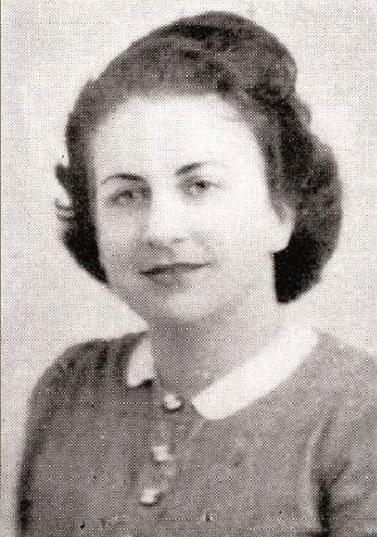
Suzanne („Suzy“) Mertzisen, geb. Boitte
Born May 15, 1919 in Colombes, Haut de Seine as daughter of Louise Amelia Lemesle and Alphonse Boitte
In 1938 she married the French military pilot Gabriel Mertzisen, who was born in Algeria. After the birth of their daughter Danielle in 1940 they moved to Algiers. On January 18, 1943, she enlisted as a radio operator for the "Corps Feminin des Transmissions". After graduation, she and 4 of her colleagues signed up for the Deuxième Bureau in Algiers for an assignment for the Section RF. The women who signed up for this dangerous task were sent to Great Britain for training. They had always been in close contact since their training as Merlinettes.
On the night of April 6, 1944, she and her comrades Pierrette Louin, Marie-Louise Cloarec and two men flew to their drop-off at Jouac. They stayed there briefly and then set off for Paris where they arrived on April 10, 1944. Already on April 27, 1944 they were caught by denunciation. During their interrogation in the Avenue Foch nothing about their mission or their organization was to be found out during the interrogation and there were no arrests based on their statements. Pierrette Louin, Marie-Louise Cloarec and Suzanne Mertzisen were imprisoned in Fresnes and were also in the transport that left Compiègne on 8 August 1944. On this transport they not only met Eugènie Djendi again, but also met women from the SOE F and were transported chained together.
It is not clear whether all these women knew each other beforehand - and had already met each other during their detention and interrogations in Paris.
The way led all these women to the concentration camp Ravensbrück, where only the so-called "Merlinettes" and Yvonne Baseden were imprisoned together for about half a year. The others were taken to the subcamp Thorgau.
Anise Postel-Vinay, who was imprisoned in Ravensbrück, had employed Suzanne "Suzy" Mertzisen, who had become the best friend of her comrade Miléna Seborova, in her small column of workers of Hilfskommando II.
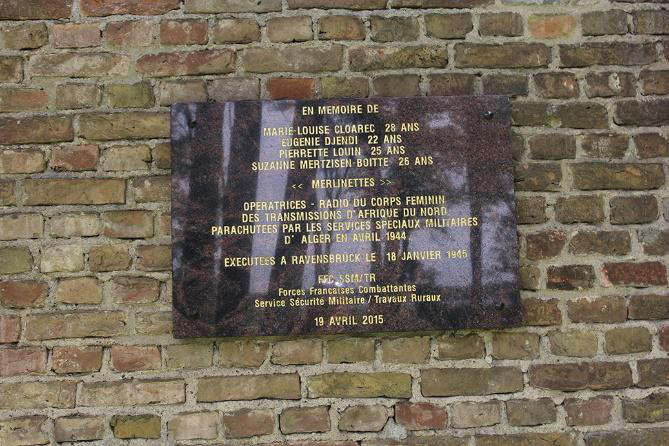
As trained soldiers, the 4 female parachutists demanded to be treated as prisoners of war. The women also had a concrete, material interest in clarifying their status, because as prisoners of war they had the right to receive Red Cross parcels.
The Germans' treatment of them and their feedback made the women feel positive. But in truth the behaviour of the camp management was in accordance with Himmler's instructions and is found identically in the executions of the four women in Dachau, the four in Natzweiler and all the executed SOE women, that the WOMEN condemned to death should not receive any information, according to the order of 22 January 1943 from Himmler to the commanders of the concentration camps. And so these women were executed in Ravensbrück on January 18, 1945, and the three women of Section F in succession, probably a few days later.
Here, too, there is an analogy to the execution of the women in Dachau and Natzweiler. Berlin only became aware of their presence in Karlsruhe through an over duty-conscious supervisor, and they were executed in the 2 groups after the sentence was served. In the case of the executions of the SOE women in Ravensbrück, this is probably the same. Because they were not only on the same transport - and there even chained together - and their background was clear, whereas this was by no means always the case with the other women. Eileen Nearne was not revealed, not even the true identity was clear from Yvonne Rudellat, and Odette Sansom had a special status. For her execution, Lilian Rolfe, Denise Bloch and Violette Szabo were specially brought from the subcamp in Königsberg.
The French "Merlinettes" from Algiers
In Algiers in 1942, General Merlin in Algeria took the initiative, on the basis of existing laws, to integrate women into the army in order to get more men for active service at arms. He was looking for women to be employed in positions as telephonists, telegraphers and radio operators. But even in view of the concrete lack of men and the legal situation, he had to "first fight a battle within the army and the general staff in order to realize his project". After the approval of the General Staff of the Army (General Giraud) on 22 November 1942, the Corps Féminin des Transmissions, (CFT) was created by a circular letter of 18 December 1942.
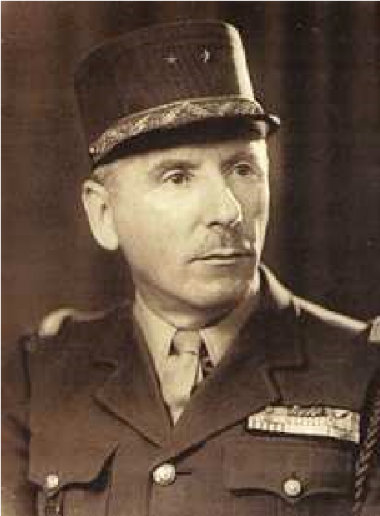
Foto : collection Musée des Transmissions
Within a short period of time, this newly created unit was promoted in the North African-French territories and women of all origins and religions living there registered accordingly. Of course, they served for France, but recognition for this service was often lacking in France and was given late and on the initiative of individuals, as the example of Jeanne Mereau shows, who was honoured at a very old age (*link in the appendix).
The training took place in various places such as Staouéli (Algeria). Officers and non-commissioned officers are first trained in Douera, later in the Hydra fortress, Algiers. The training courses lasted three weeks.
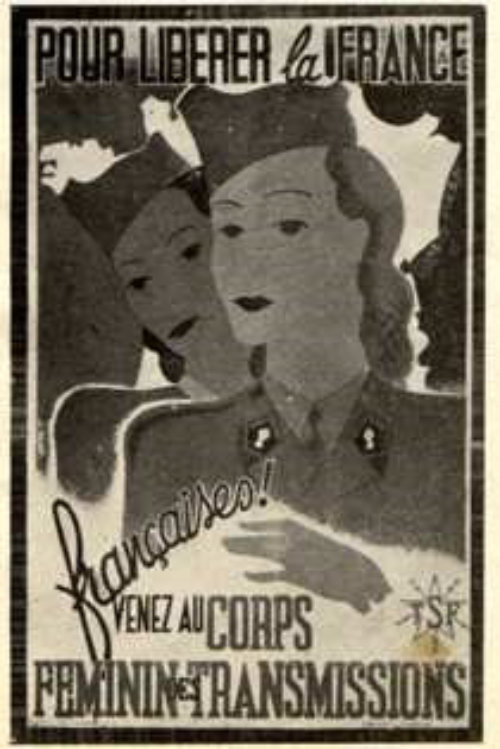
The French women directly in the army were considered military, while the so-called "Merlinettes" initially had only the status of civilians in uniform. In the beginning, they did not even receive pay, but a salary, from which even the costs for board and lodging were deducted. Gradually, General Merlin achieved free medical care, as well as free board and lodging, to the point that the volunteers of the French Expeditionary Force (CEF) were treated like other soldiers in Italy.
Merlinettes were deployed on all fronts of the fighting De Gaulle's troops, from Monte Cassino to Strasbourg, and participated in the corresponding landing operations in Italy and the South of France.
Some were highly decorated.
Special operations of the "Merlinettes" for the "Special Operations Executive" Section RF
At the beginning of 1944, London and Algiers became the preparation centres for the Allied landings in Normandy and the Mediterranean. Some of the secret service detachments of the Deuxième Bureau in Algiers joined those of the Presidium in the London Central Bureau for Information and Action (BCRA). Each planned task force usually consisted of three members, one of whom was a radio operator. At the beginning of the mission, the non-commissioned officers were appointed as temporary lieutenants. The Deuxième Bureau in Algiers contacted General Merlin in order to recruit the urgently needed radio operators from him.
As with the "Merlinettes", the status of all female agents of the SOE was unclear: under martial law, they were not considered female soldiers, even though their training and actions were sometimes very impressive military achievements. But even after the war, it took a long time before the women received the badges and honours that men take for granted, not to mention public honours. Only for the group of SOE F women for whom Vera Atkins was responsible, and only because of her initiative, was there relative publicity. This in turn was very specific and many women whose achievements were spectacular were pushed into the background by individuals who were very popular.
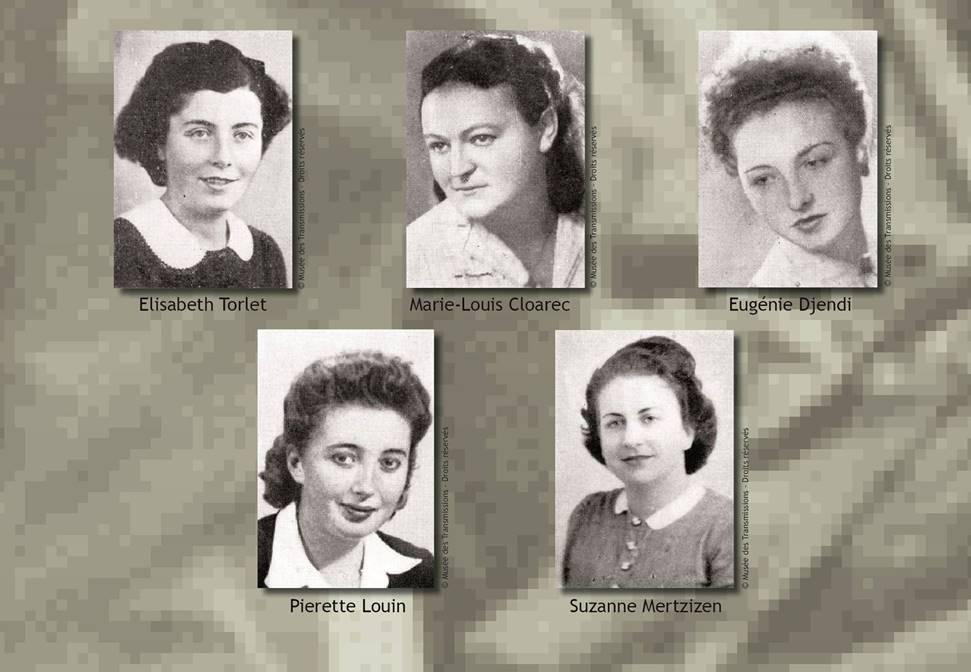
Foto: Musee des Transmissions.
At least thirty of the women radio operators from North Africa completed the training in England and currently 12 women are known by name, who ended up in the field: Frédérique Bigrel (also Biguel, Doubs area), Denise Colin (also Colin), Suzanne Combelas later Pax, Colette Martini, Jeanne Mereau, Geneviève Torlet, Elisabeth Torlet, Evelyne Valve Marie-Louise Cloarec, Eugénie Djendi, Pierrette Louin, Suzanne Mertzisen. Denise Colin was wounded near Lyon, interrogated by the Gestapo, deported to Ravensbrück and liberated by the Russian army in a sub- camp Evelyne Valve was captured and executed during her deployment in Vendome. Elisabeth Torlet was caught and shot in Blussans during her mission